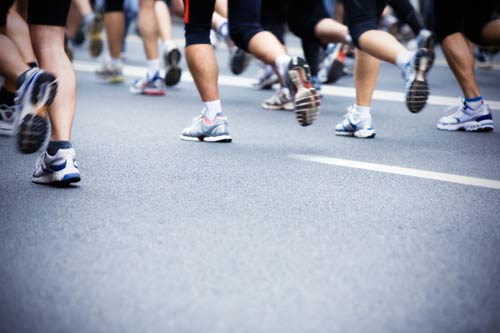Learning Center » Hip

There are a number of conditions around the hip that can be difficult to differentiate. Sometimes it is a process of elimination if no obvious cause is revealed by initial physical examination, regular x-rays and patient history. Hip pain can sometimes result from pinched nerves in the back.
Hip Arthritis
Groin pain from hip arthritis is typically apparent on regular x-rays. People describe it in a number of ways. Sometimes it is dull or sharp groin pain, and sometimes the leg is just “tired” all the time. Commonly there is difficulty getting going in the morning, but then the hip “loosens up” after a few steps. Physical therapy and low impact exercises (swimming or water therapy) and anti-inflammatory medication may be effective. Although steroid injections can help diagnose the hip joint as the pain generator, the pain relief they offer is usually short-lived.
The most definitive long-term treatment is hip replacement, which means the ball and socket is replaced with a metal and plastic joint. There are various approaches to inserting an artificial joint. I prefer the anterior approach, which has the advantage of going in between muscles, instead of cutting and splitting muscles. Another advantage is that the patient does not have to worry about bending the hip too far since the typical precautions can be avoided. There is a risk of dislocation with an artificial hip, but it is often much lower with the anterior approach to surgery.
There is also a risk of having to lengthen the leg in order to make the hip joint more stable. If this is the case, then heel lifts inside of shoes are used to help eliminate the difference.
Another important factor to keep in mind is the risk of blood clot. I typically prescribe one aspirin daily for six after surgery, to minimize risk. See my discussion on knee replacement for more information on blood clot prophylaxis options.

Athlete’s Hernia /Athletic Pubalgia
This condition causes groin pain that may result from inflammation or partial tearing of one of the muscles that attaches around the pelvis/hip joint. Sometimes it is from the rectus (abdominal) musculature being strained, or the adductor (inner thigh) muscles where they attach to the pelvis. Treatment suggests avoiding activity that might worsen it for four to six weeks, and use of anti-inflammatory medications. This can be a nagging injury; often diagnosed after excluding other disorders.
Stress Fracture
Groin pain in the runner, or in someone who recently increased their activity level, may be caused by a stress fracture (incomplete crack) of the thigh bone supporting the ball and socket.
Sometimes a young person suffering this condition can barely walk, due to the pain. The female long distance runner is of particular concern. This is especially true when there is eating disorder and osteoporosis and absence of menstruation (the so-called “female athlete triad”).
Stress fracture may be detected with regular x-rays, but usually requires more advanced imaging such as MRI or CT scan. When stress fracture is suspected, the patient must be on crutches (immediately) until the diagnosis can be ruled out. If stress fracture is diagnosed, treatment depends on the location of the crack in the bone. When the crack is on the superior side of the bone (with its higher risk of progression to a complete crack) treatment requires surgical screw-fixation in the operating room.
Hip Labrum Tear
Cartilage surrounding the hip joint may cause pain when torn. This condition can be diagnosed with MRI or hip arthroscopy. Sometimes abnormal bone formation can be detected on regular x-rays in the office. This bone may cause ‘pinching’ of the socket cartilage. I perform arthroscopic treatments that involve shaving bone and/or repairing the cartilage tear to stop the impingement of bone on cartilage. This will hopefully prevent, or at least slow, the progression of degenerative arthritis. I also perform arthroscopic repairs of hip muscle (gluteus) tears.
Hip Bursitis and Abductor Tears
The abductor muscles connect the pelvis to the outer hip. They are the muscles that allow you to keep your body upright when standing on one leg, and help give strength for activities like climbing stairs and lifting the leg away from the body. Sometimes these tendons get partial or complete tears and cause weakness and/or pain on the outer hip. There can be outer hip pain that is painful to sleep on at night. Many times outer hip pain is an inflammatory issue (aka “trochanteric bursitis”), which can be treated with Physical Therapy and ultrasound-guided steroid injection. If the bursitis does not resolve with multiple months of treatment, it can sometimes indicate an actual tendon tear. This can be most accurately diagnosed with MRI evaluation, and treatment for tears can include endoscopic (minimally invasive camera assisted) repair as an outpatient procedure. I typically place people on crutches for about 3 weeks after a repair to protect it in the early healing phase. There is a gradual strengthening program after that.
